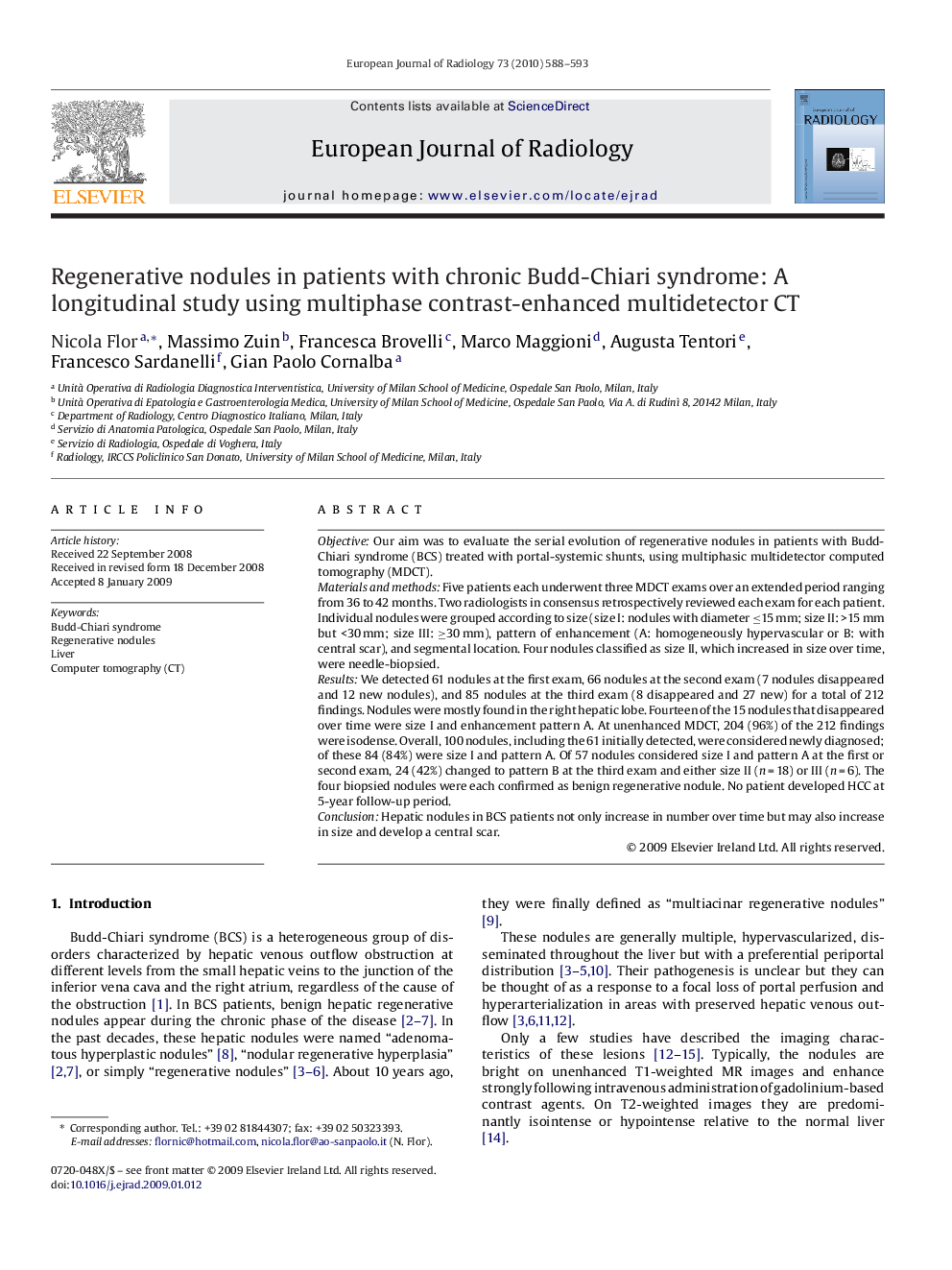| Article ID | Journal | Published Year | Pages | File Type |
|---|---|---|---|---|
| 4226858 | European Journal of Radiology | 2010 | 6 Pages |
ObjectiveOur aim was to evaluate the serial evolution of regenerative nodules in patients with Budd-Chiari syndrome (BCS) treated with portal-systemic shunts, using multiphasic multidetector computed tomography (MDCT).Materials and methodsFive patients each underwent three MDCT exams over an extended period ranging from 36 to 42 months. Two radiologists in consensus retrospectively reviewed each exam for each patient. Individual nodules were grouped according to size (size I: nodules with diameter ≤15 mm; size II: >15 mm but <30 mm; size III: ≥30 mm), pattern of enhancement (A: homogeneously hypervascular or B: with central scar), and segmental location. Four nodules classified as size II, which increased in size over time, were needle-biopsied.ResultsWe detected 61 nodules at the first exam, 66 nodules at the second exam (7 nodules disappeared and 12 new nodules), and 85 nodules at the third exam (8 disappeared and 27 new) for a total of 212 findings. Nodules were mostly found in the right hepatic lobe. Fourteen of the 15 nodules that disappeared over time were size I and enhancement pattern A. At unenhanced MDCT, 204 (96%) of the 212 findings were isodense. Overall, 100 nodules, including the 61 initially detected, were considered newly diagnosed; of these 84 (84%) were size I and pattern A. Of 57 nodules considered size I and pattern A at the first or second exam, 24 (42%) changed to pattern B at the third exam and either size II (n = 18) or III (n = 6). The four biopsied nodules were each confirmed as benign regenerative nodule. No patient developed HCC at 5-year follow-up period.ConclusionHepatic nodules in BCS patients not only increase in number over time but may also increase in size and develop a central scar.
